How To Safely Pack Electronics in Your Checked Luggage
We may earn a commission from purchases you make after clicking links on this site. Learn more.From carry-on lovers to overpackers, only bringing a tablet to traveling with a full-on mobile office, everyone has their own packing style and their own arguments for why it’s the best. There’s one aspect on which everybody seems to agree, though: never, ever, put your electronics in your checked luggage.
We wholeheartedly agree. The risk of damage or theft is far greater in a checked bag than in your carry-on, not to mention the fact that some electronic items are banned from the cargo hold anyway.
Even so, we realize there are few absolutes in the world, and this isn’t one of them. Whether it’s due to carry-on weight restrictions, a sudden change in airline policy (as happened a few years back), or anything else, there may be a time when you have no choice but to stow your electronics in your suitcase and hope for the best at the other end.
If this happens to you, it’s important to know what to do. That’s why we’ve put together these 10 “best practice” tips to help keep your electronics safe in checked luggage.
Know What Can Go in the Hold
The first thing to confirm is whether the device you plan to put in your checked luggage is allowed to be there. Rules and guidelines change regularly, but at the time of writing, the Federal Aviation Administration (FAA) in the United States and most of their global counterparts forbid the following in the plane’s cargo hold:
- spare (uninstalled) lithium metal batteries and lithium-ion batteries
- electronic cigarettes
- vaping devices
Note that the prohibition on lithium-ion batteries in the hold extends to power banks of any size. Any damaged, defective, or recalled lithium-ion battery isn’t permitted to be carried at all, either in checked or carry-on bags.
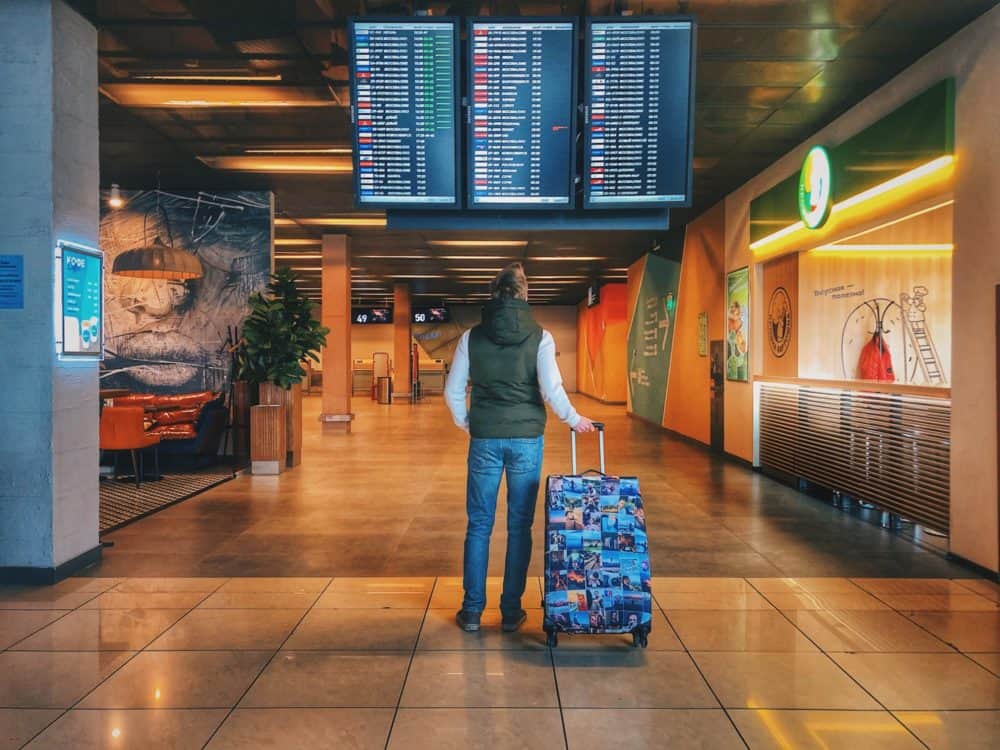
Make Sure the Device Is Turned Off
There are several reasons to leave your devices in sleep mode while at home, but manufacturers and others recommend fully turning them off if you are going to transport them anywhere.
This is even more true if you have to check your laptop or tablet on a flight. Leaving it turned on could result in overheating or damaging the hard drive, and if you encrypt your data (see below), not turning your device off can leave that data accessible to others. So, power down your gear before you pack it.
Invest in a Solid-State Hard Drive for your Laptop
If you’re in the market for a new laptop, make sure you get one with a solid-state drive (SSD.) Unlike standard hard drives, a SSD has no moving parts. That makes it less prone to being damaged by movement, bumps, and magnets, so it’s the perfect option for any laptop that might end up traveling in a checked bag.
Most manufacturers offer models with SSDs, so just check the spec sheet carefully before you buy. If you want to upgrade your existing laptop, it’s often possible to switch your existing hard drive for an SSD (although it can void the warranty if you do so).
Set Up a Hard-to-Guess Password or Passcode
This is particularly true of tablets and phones, but important for laptops as well. Using the basic security features built into the device is the first step towards preventing data theft, so don’t ignore them.
Setting up an intricate password or passcode (think random numbers or the classic upper case-lower case-number-symbol combinations) should be the very first priority when securing your devices. If they allow for enrolling your fingerprints or face, like the latest smartphones, tablets, and laptops, go ahead and do so.
The more barriers you set up between your data and those who’d like to steal it, the better.

Encrypt Your Data
Passwords aren’t infallible, sadly. Some would argue they’re a pretty weak way to protect your devices, in fact. So, take things up a notch, and encrypt your data to make it unreadable by others.
Most operating systems, including Windows and MacOS, include an encryption system, but you need to make sure it’s enabled. You can also choose to pick your own software and do it manually. We’ve used VeraCrypt for years, and AxCrypt also gets good reports. You can encrypt your entire drive, or only those files with sensitive data.
The same applies to phones and tablets. Encryption is enabled as soon as you choose a passcode on iOS, and is straightforward to do on Android if it’s not enabled by default, so make sure you do it long before you get to the airport.
Use Monitoring Software
Knowledge is power, and knowing whether your data has been compromised as soon as it happens (or at least, as soon as you land) may be the difference between a small problem and a very large one.
Software programs like Little Snitch or ActivTrak let you know whether any new activity or data access has taken place, so you can change passwords, remotely wipe your device (see below), and take whatever other steps are necessary to remedy the situation.
Wipe It Clean of Data & Use External Storage
Another option for keeping data away from prying eyes is to store it somewhere else. Putting it in practical terms: copy all your files onto external storage or into a cloud-based file system, then remove them from your device. So far, at least, external drives and USB sticks are fine in your carry-on.
Make sure, too, that none of your apps, programs, or websites have your login details saved. It will be a mild annoyance to log back into everything once you’re at your destination, sure, but much less serious than if anybody were to have full access to your personal information.
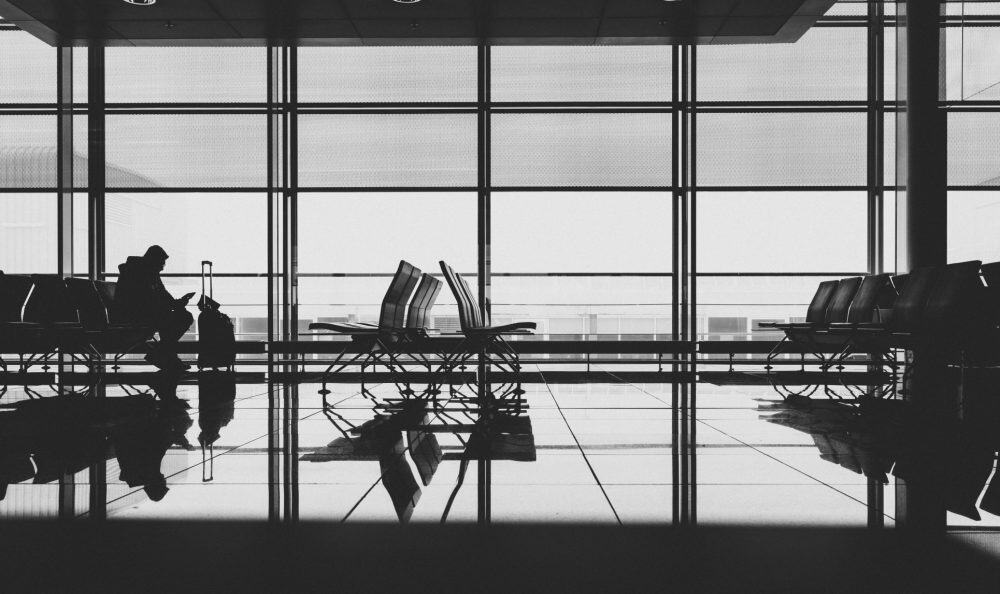
Enable Remote Data Wiping
If you choose not to wipe your device beforehand, at least make sure you can do it afterward. Enabling remote data deletion could be a real lifesaver if your checked luggage gets lost, or if your monitoring software tells you someone is tampering with your device.
Apple’s Find My iPhone does this for the company’s laptops, tablets, and smartphones, and Google’s Find My Device does the same for Android devices. Another good option is Prey, which works across multiple platforms including Windows. They’ll all help locate missing devices, or wipe them if worst comes to worst.
Consider Using a Burner
Another option is to buy a no-frills, inexpensive laptop or tablet for travel, and use it along with your external hard drive or cloud storage. For travelers with a home base, this might be the perfect compromise: you can stay connected on your trip, while your main device stays safely behind.
If you’ve got an old device lying around that’s still serviceable, you might be able to use that instead. Just be sure to fully wipe it beforehand.
Business traveler? Raise this possibility with your company, as it may actually make things easier (and safer) for both parties.
A Chromebook is particularly good for this, as they’re typically inexpensive and store their data in the cloud by default. You can reset them back to factory settings before a flight, then restore everything just by logging in when you get to your destination.
Get regular updates from the world of travel tech and remote work
News, reviews, recommendations and more, from here and around the web
Pack Your Suitcase Extra-Carefully
When it comes to the actual packing, err on the side of caution, and try to think of everything that can possibly go wrong with checked luggage.
Exploding shampoo? Bad enough on your clothes, devastating on your laptop. Take as few liquids as possible, wrap them tightly in one or more Ziploc bags, and pack them as far away from your electronics as possible. Put your laptop or tablet in a padded case in the middle of your suitcase, with soft items like clothing above and below.
Dented suitcase? Smashed handles? Imagine what that means for the valuables inside. For starters, consider adding a “Fragile” sticker to the suitcase. It might also be worth asking at check-in if there’s a special service available for fragile bags. Some airlines offer it, and could be up for lending you a hand (sometimes for a fee, but still).
Lost luggage? Maddening in any situation, but especially so if your most important business tool is inside. Take a look at trackers like the Tile Pro — they could be a lifesaver in this situation.
Images via Anete Lūsiņa (suitcase with laptop and camera), Danila Hamsterman (man with suitcase looking at screens), Pete Linforth (encrypted data), Matthias Ripp (man in waiting room)

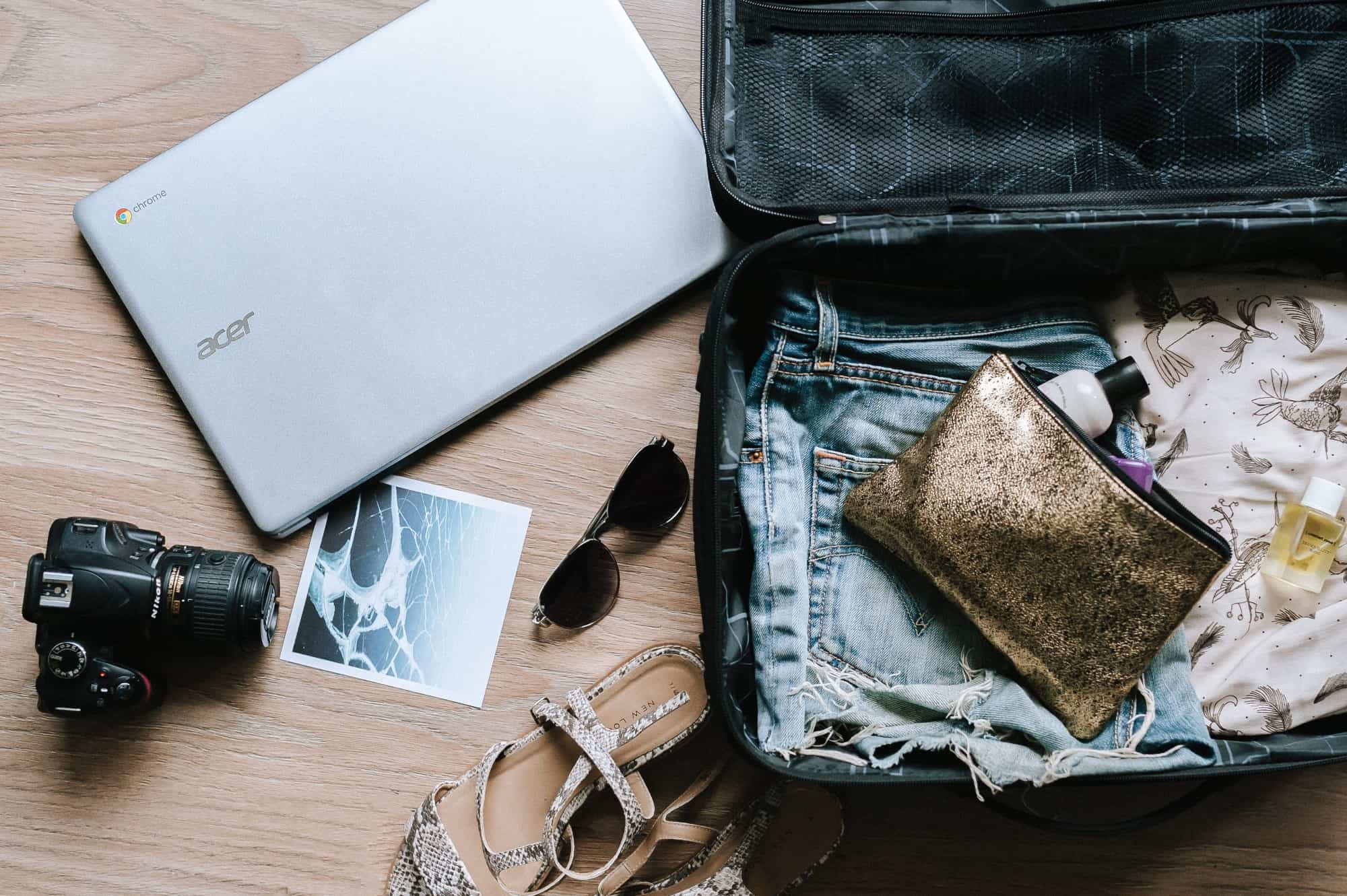
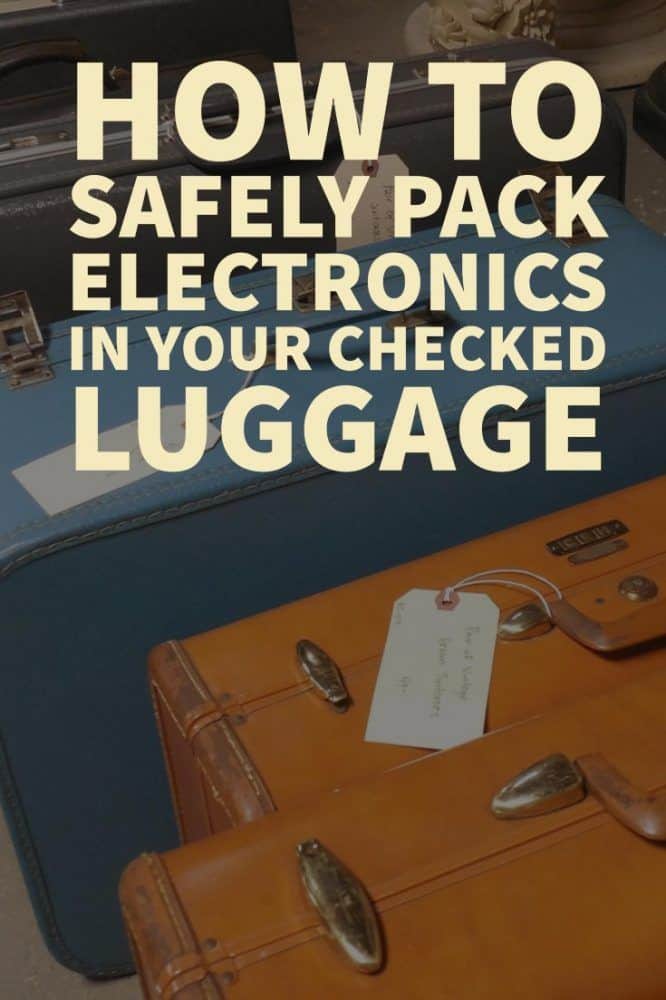

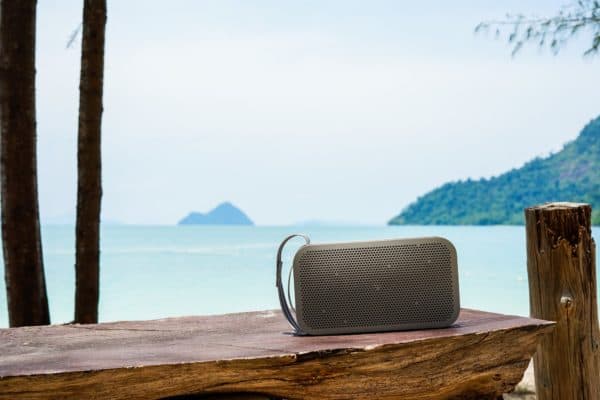
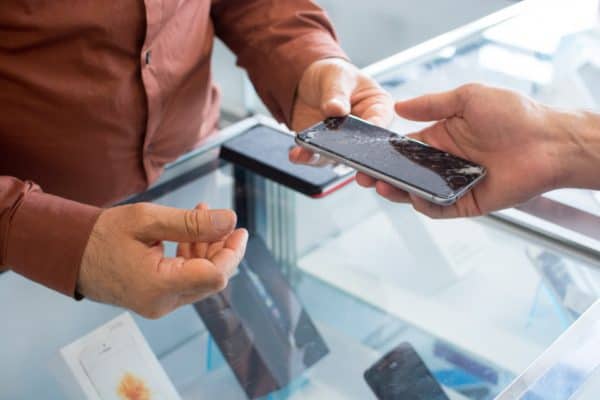

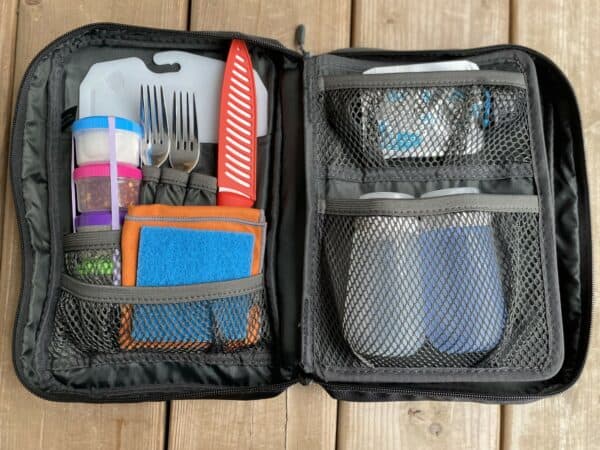
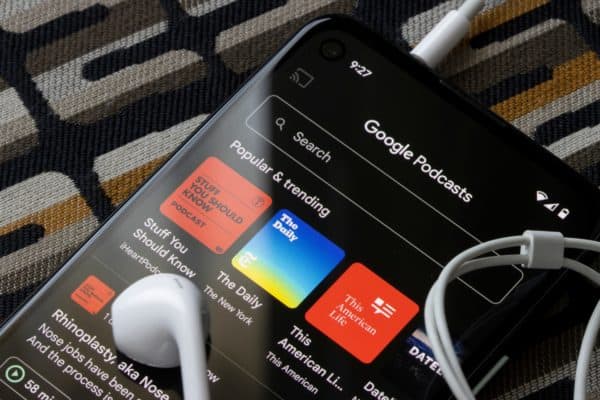
Excellent advice, as always from Too Many Adapters.
For people not wanting to risk a fragile laptop in a checked bag, here’s my Too Many Adapters article about working from the road using just an ipad and a phone: https://toomanyadapters.com/work-travel-ipad-possible/
thanks!
Johanna
Great article but you don’t mention how to combat the thieves at TSA.
The losses will be incredible
There are a few things we mentioned that might help get your gear back, or protect the data that’s on your devices, but in terms of stopping a baggage handler or someone else with physical access to your luggage from stealing your gear? Yeah, there’s a limit to what even we can do to help with that one. Cross your fingers, and don’t forget your travel insurance. :/
Aren’t lithium batteries banned from the holds of aeroplanes? Certainly in Europe it’s an issue but there dosen’t seem to be any straight forward info on it.
Above a certain size, yup.